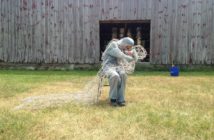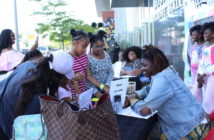“I feel most colored when I am thrown against a sharp white background.”-Zora Neale Hurston
As a byproduct of a conversation with my dear friend and fellow artist Chanel Thervil, this essay grapples with issues of power presented within Carrie Mae Weems’ exhibition “I once knew a girl...” at the Cooper Gallery at Harvard University. Entering the exhibition, it feels like you are walking through halls of Nefertiti’s tomb, with offerings and images for an afterlife and sounds that guide us through history.
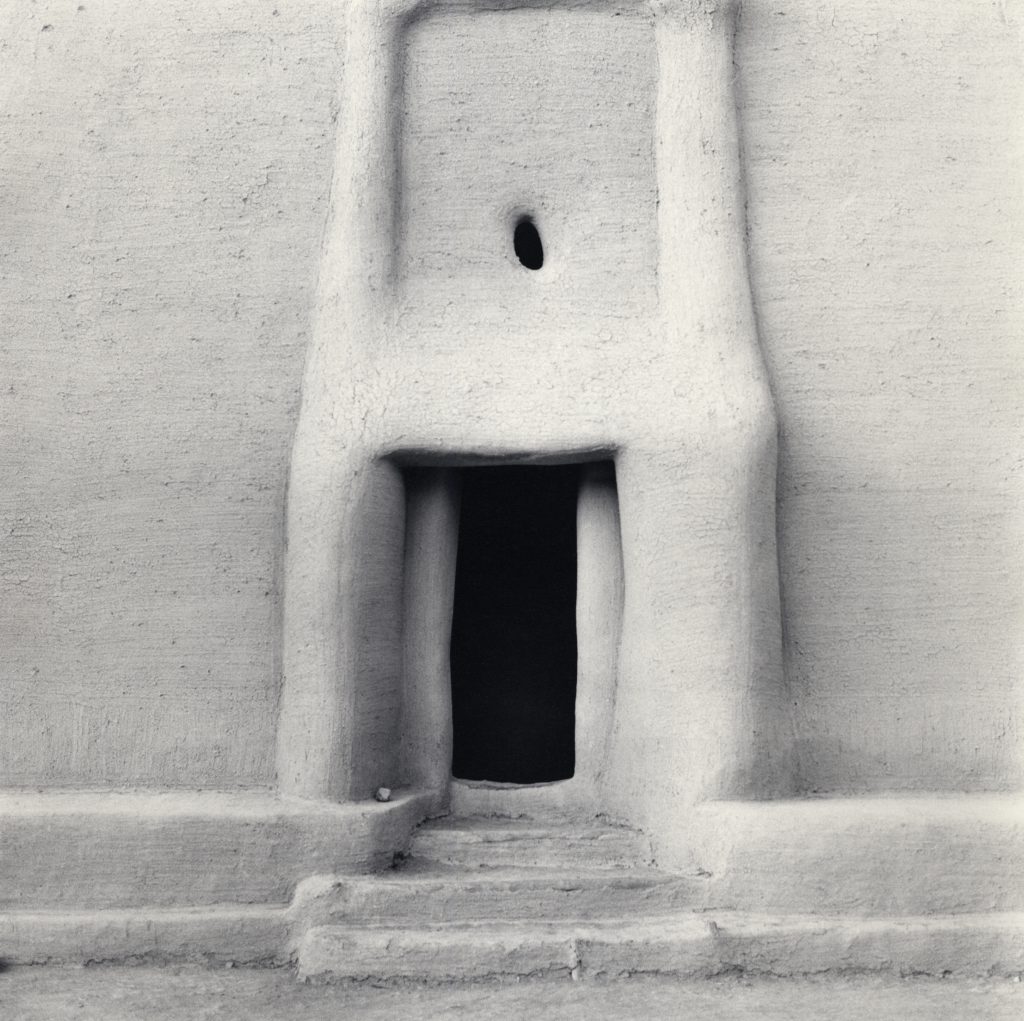
“The Shape of Things” from the Africa series (1993) Courtesy of the artist and Jack Shainman Gallery, New York.
Throughout her work, Weems queries how power is propagated by and relates to architecture, gender, and race in Western art practices. Weems disrupts the divisions caused by being ignored, acknowledged, and being the frontrunner in her tableaus exploring black womanhood and femininity. Here, Thervil and I discuss Weem’s work in connection to our experiences and art making. --Silvi Naci
Silvi Naci: Weems narrates the human consequences of the social structures within dominant patriarchal art culture by re-configuring these traditional practices unblushingly inserting herself in the scenes, combining the compositions with powerful text. Historically, paintings of women have been executed through the male gaze. Their voyeuristic tendencies have also featured the kind of woman that possesses two key traits: whiteness and desirability.

“Not Manet’s Type” (1997) Courtesy of the artist and Jack Shainman Gallery New York.
“The black man insists, by whatever means he finds at his disposal, that the white man ceases to regard him as an exotic rarity and recognize him as a human being.” - James Baldwin
Chanel Thervil: Weems skillfully plays with the trope in the Fade to Black series. By blurring the images of black entertainers, like Josephine Baker and Lena Horne, the viewer is left to focus on the beauty of their bodies, propped and poised in the fashion of Goddesses that dominate Greco-Roman sculpture. It is only after the titles of these works have been revealed that the realization kicks in that these bodies are black. The beauty displayed belongs to black women as opposed to that of a classical marble.
“When black women actresses such as Lena Horne appeared in mainstream cinema, most white viewers were not aware that they were looking at black females unless the film was specifically coded as being about blacks.” - bell hooks
CT: Through the “Beauty” section of her show, Weems makes the viewer who equates whiteness with beauty uncomfortable. Suddenly you have to interface with the politics of perceiving someone as “white passing” and ultimately end with questioning what shapes your perception of the beauty within the image and why that is. Colorism is a classic case of a social construct that makes no sense. While white audiences were awed and entertained by lighter skinned black women like Baker and Horne, that didn’t make them immune to segregation or discrimination from the very same patrons. Plopping misogyny into that equation only makes the situation worse because there’s the added demand of having their femininity and beauty appease not only whiteness but also the male gaze.

“Slow Fade to Black II (Josephine Baker)” (2009-2011) Courtesy of the artist and Jack Shainman Gallery New York.
“....we can both interrogate the gaze of the Other but also look back, and at one another, naming what we see. The “gaze” has been and is a site of resistance for colonized black people globally. Subordinates in relations of power learn experientially that there is a critical gaze, one that “looks” to document, one that is oppositional. The power of the dominated to assert agency by claiming and cultivating “awareness” politicizes “looking” relations - one learns to look a certain way in order to resist.” -bell hooks
SN: The black women in Weems’ work are no longer romanticized, eroticized, objectified, turned into a postcard and sold as a travel souvenir, like a Gauguin painting, or worse the women in de Kooning's “paintings, of buxom, vampish females, knotted up in swathes of abstraction.” The male artist has used the female bones as steps to climb to the very top of the art world. In some cases their wives have been the better artists and maybe their foundation, just to mention a few: Annie Albers, Eva Hesse, Frida Kahlo, Lee Krasner, Georgia O’Keefe, and Susan Weil.
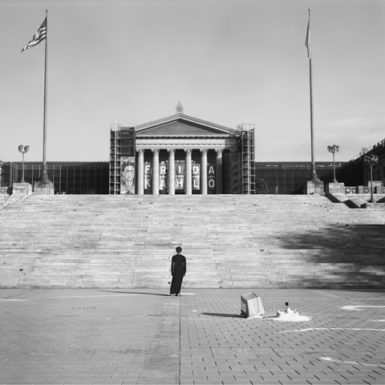
“Philadelphia Museum of Art – Philadelphia” (2006) Courtesy of the artist and Jack Shainman Gallery, New York.
History books are filled with enough white male artists and their perspectives. We need to question these historical systems and create new ones that foster institutional, gender, and racial equity.
“Every museum that is worth its salt is thinking about what it's doing, how it's doing it and reexamining its history in order to refashion how it will actually function in the next 25 to 50 years and if they can actually remain relevant and pertinent to society now.” –Carrie Mae Weems
SN: The series Landscapes was born during Weems’ residency in Rome, in which she confronts historical structures of power by photographing herself standing outside of iconic museums as a silent observer. Weems traveled across Europe then back to the US to mark these very important spaces that don’t have a single African American image or artist housed within.

“The Edge of Time - Ancient Rome” (2006) Courtesy of the artist and Jack Shainman Gallery, New York.
CT: You can't decide what you look like, that’s up to genetics. Even when you’re an artist of color with a high caliber, you can still lack basic acknowledgment from institutions in your field. As a woman of color (and a black woman especially) you are constantly interfacing with the fact that your worth is not respected in the same ways as that of the white woman. During the Trump campaign he spoke terribly about many minorities, but as soon as he commented on grabbing white “pussy”, a surge of white Americans raised their voices in disgust. No black politician could have run a campaign like Trump did and come out unscathed.
The error is not to conceptualize this ‘presence’ in terms of power, but to locate that power as wholly external to us-as extrinsic force, whose influence can be thrown off like the serpent sheds its skin." -Stuart Hall
CT: It’s not a new thing for Black female artists to be making this kind or work, or to exhibit it. We as the audience have to move past the ‘looking’ and start confronting the atrocities embedded within to consider in what ways we are a silent bystander or a participant.
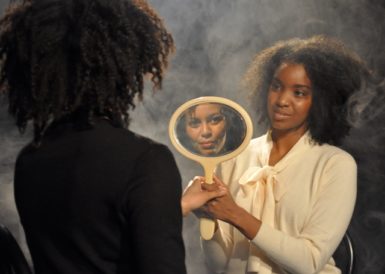
“The Considered, See Bergman” (2012) Courtesy of the artist and Jack Shainman Gallery, New York.
SN: We continue to challenge these social constructs until we can put new ones in place, in respect to oppressed cultures, gender, and class. Weems’s work doesn’t only scrutinize and analyze the systems of power through visual language, it offers and puts in place new structures for generations to follow. Weems speaks about her intention of making these images and where the richness of our lives can be understood through them. In many ways, she carefully constructs humanity, and hopefully, the viewer sees something about themselves in the work, leading you into history.
Carrie Mae Weems: I once knew a girl... is on view through Jan 7, 2017at The Cooper Gallery at the Hutchins Center for African & African American Research, Harvard University.
References
- bell hooks’s The Oppositional Gaze of Black Female Spectators
- Carrie Mae Weems: Artist Tour and reception, Cooper Gallery, 10.28.16
- Solange’s A Seat at the Table
- THEMATIC: Appropriation and Borrowing, Art 21
- The strange story behind de Kooning’s Woman I, Phaidon
- “I woke up in a house built by slaves.” –FLOTUS, Michelle Obama
- Zora Neale Hurston's How it feels to be a colored me
- Uniform, 2015, Jackie Nickerson
- Notes of a Native Son, 1984, James Baldwin
- The strange story behind de Kooning’s Woman I, Phaidon
- “I woke up in a house built by slaves.” –FLOTUS, Michelle Obama
- BET Awards 2016, Jesse William
- U.S. Department of Education, National Center for Education Statistics
- Black Women Have Become The Most Educated Group In The U.S.
- Women of Color: A Growing Force in the American Electorate
- https://www.washingtonpost.com/graphics/politics/2016-election/exit-polls/
Silvi Naçi is an artist and curator living and working in Boston. Naci cares deeply about community, and she is devoted in developing creative and interactive platforms for artists of disenfranchised cultures. Currently, Naci works on her studio practice and as independent curator.
Chanel Thervil is an artist and educator obsessed with all things art, community, and history. In addition to her work with sparc! theArtmobile she currently serves as the Program Manager at The Art Connection. To find out more about her work visit her website chanelthervil.com


